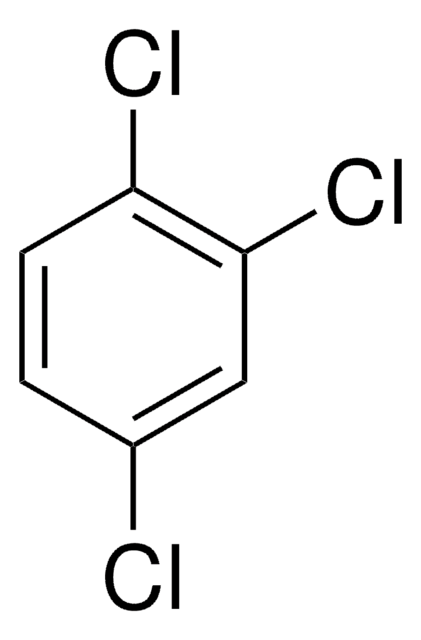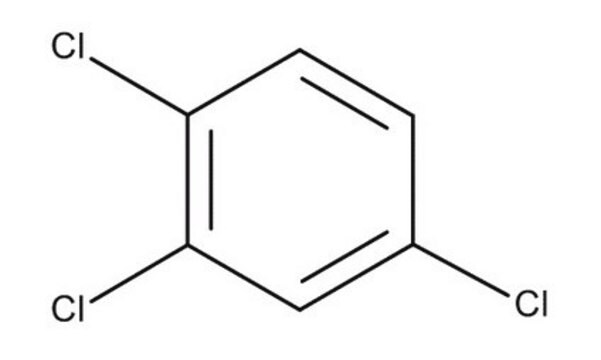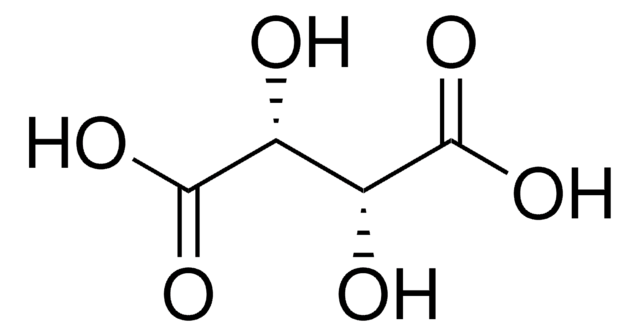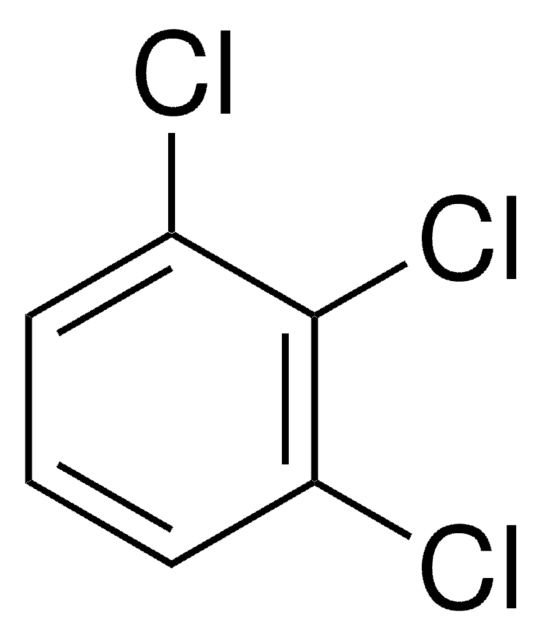132047
1,2,4-Trichlorobenzene
ReagentPlus®, ≥99%
About This Item
Prodotti consigliati
Densità del vapore
>6 (vs air)
Livello qualitativo
Tensione di vapore
1 mmHg ( 40 °C)
Nome Commerciale
ReagentPlus®
Saggio
≥99%
Stato
solid or liquid
Temp. autoaccensione
1060 °F
Limite di esplosione
6.6 %, 150 °F
Indice di rifrazione
n20/D 1.571 (lit.)
P. ebollizione
214 °C (lit.)
Punto di fusione
16 °C (lit.)
Solubilità
water: insoluble
Densità
1.454 g/mL at 25 °C (lit.)
Stringa SMILE
Clc1ccc(Cl)c(Cl)c1
InChI
1S/C6H3Cl3/c7-4-1-2-5(8)6(9)3-4/h1-3H
PBKONEOXTCPAFI-UHFFFAOYSA-N
Cerchi prodotti simili? Visita Guida al confronto tra prodotti
Categorie correlate
Descrizione generale
Applicazioni
1,2,4-Trichlorobenzene may be used as a solvent in the synthesis of indene-C60 bis adduct, which can find applications in high performance solar cells. It can also be used as a carrier gas in the textile industry.
Note legali
Non trovi il prodotto giusto?
Prova il nostro Motore di ricerca dei prodotti.
Avvertenze
Warning
Indicazioni di pericolo
Consigli di prudenza
Classi di pericolo
Acute Tox. 4 Oral - Aquatic Acute 1 - Aquatic Chronic 1 - Skin Irrit. 2
Codice della classe di stoccaggio
6.1C - Combustible acute toxic Cat.3 / toxic compounds or compounds which causing chronic effects
Classe di pericolosità dell'acqua (WGK)
WGK 3
Punto d’infiammabilità (°F)
235.4 °F - closed cup
Punto d’infiammabilità (°C)
113.0 °C - closed cup
Scegli una delle versioni più recenti:
Possiedi già questo prodotto?
I documenti relativi ai prodotti acquistati recentemente sono disponibili nell’Archivio dei documenti.
I clienti hanno visto anche
Il team dei nostri ricercatori vanta grande esperienza in tutte le aree della ricerca quali Life Science, scienza dei materiali, sintesi chimica, cromatografia, discipline analitiche, ecc..
Contatta l'Assistenza Tecnica.









